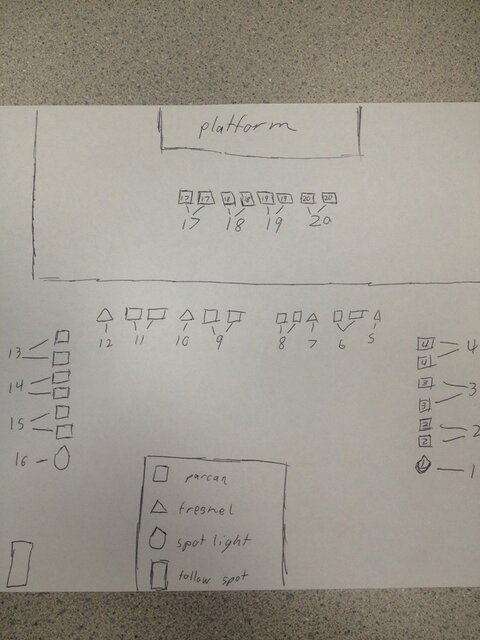If you are working in a space where all you can do is focus the lights but not move them around (known as a "rep
plot") then you have a different set of hurdles to jump compared to completely designing your own
plot. With any design though, you should start by reading the script, listening to the music (for musicals or dance shows), watching a couple rehearsals, and talking to the director and set designer about their visions for the show. When you read and listen to the show, think about how it makes you feel and think about how lighting could evoke that feeling. The fun thing about Suessical is that there is really no right or wrong answer to how it gets designed. It is totally made up fantasy! Just remember that the most important rule, especially in academic
theatre, is that you have to be able to see the actors faces! Some people will say you have to be able to see the actors, but it is really their faces that count!
Since you are working on a rep
plot, the only real choices you can make are color and focus. So you will want to pick colors that work with the set and costume designs as well as create the feeling you want. You don't want to pick a color that makes all the costumes look like mud, that would be a bummer. Then, as people have said, you probably want to divide the
stage up into areas and then focus lights to each area. Traditionally that would be some form of front, sides, and back/top light. If you have enough units, you may do each area in multiple colors, or you may choose to use some units for broader washes.
That's kind of the super short and sweet way it works. Basically you just need to jump in and see what works for you and the show and learn from it.



